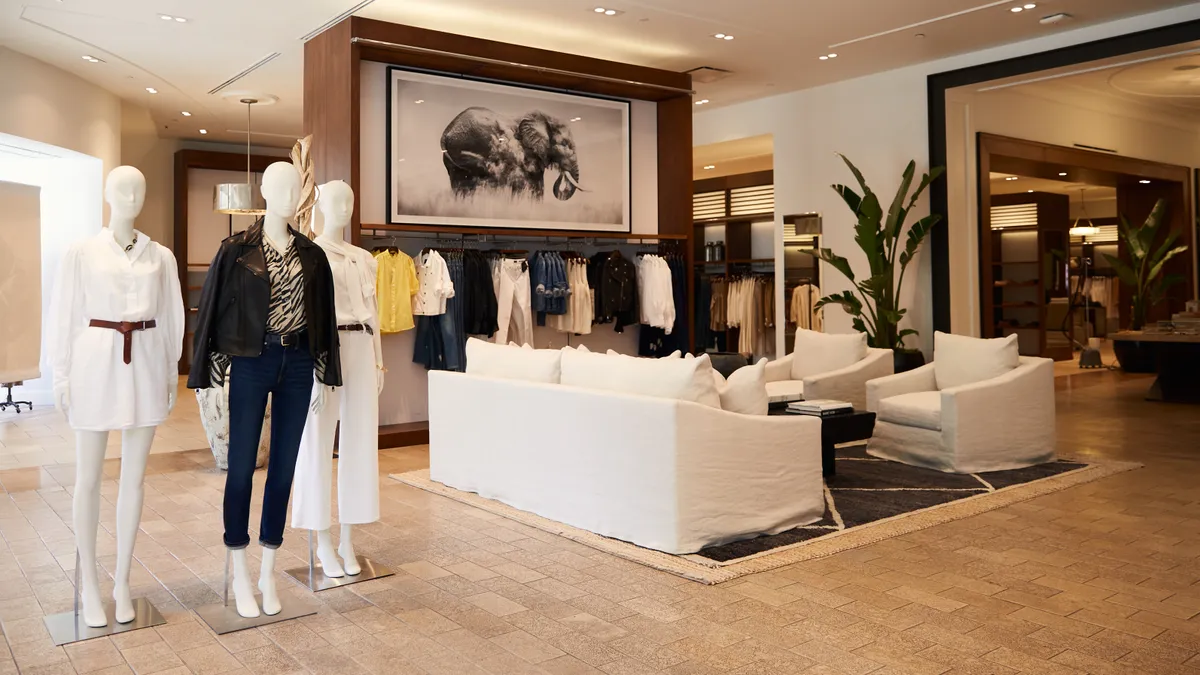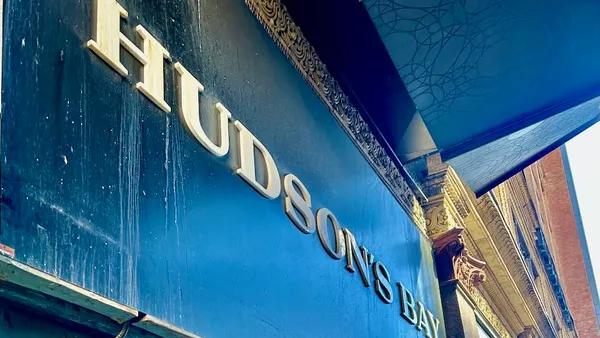Dive Brief:
-
Sandra Stangl is out as Banana Republic CEO, a Gap Inc. spokesperson confirmed by email. Women’s Wear Daily first reported the news.
-
Stangl arrived in late 2020 from furniture startup Mine.
-
Gap Inc. didn’t reply to questions about the reasons for her departure or whether it has found her replacement.
Dive Insight:
Some observers have been taken aback by Banana Republic’s venture into the home category last year, though, considering Stangl’s extensive experience in home and furniture retail, it is perhaps not all that surprising.
In addition to being co-founder and chief merchant at Mine, Stangl spent more than two decades at Williams Sonoma, including a stint as president of Pottery Barn Brands, and launched Pottery Barn Kids and Pottery Barn Teen, per Gap Inc.’s 2020 press release and her LinkedIn page. She then held leadership positions at luxury furniture brand RH, previously known as Restoration Hardware.
It’s not clear how helpful that move has been for the brand’s turnaround effort, however. After some signs of a comeback in recent years, the brand has faltered again. In the holiday quarter, Banana Republic net sales fell 2% to $567 million as comps fell 4%. Still, while full year net sales fell 8% compared to 2022, with comps down 7%, the brand still did a brisk $1.9 billion business last year.
In March, newly arrived Gap Inc. CEO Richard Dickson told analysts that the company was “focused on reestablishing this brand to thrive in the premium lifestyle space,” and that it was “encouraged by the brand aesthetic, but it will take some time to get this right and unlock the potential of this business.” But he didn’t mentioned its move into home.
“As I've dug in with the Banana Republic team, I've realized that we are behind on the fundamentals, having the right product in the right place, with the right price,” he also said. “2024 will be about getting back to the basics, both for product and execution. This includes a focus on go-to wardrobe pieces and BR classics like sweaters, oxfords, suit separates and khakis, those products that Banana Republic has been known for and will be again.”
Following the brand’s foray into home, Liza Amlani, principal and co-founder of Retail Strategy Group, called that a distraction from what she sees as necessary improvements in women’s apparel. And in a March note, Jane Hali & Associates analysts noted the bad timing of the move, considering the category’s recent struggles, especially because Banana Republic’s assortment includes not just soft goods but also furniture, and at relatively high prices.
“We hope that Richard Dickson will address this issue,” they also wrote.
The brand may have had more success with the category if they had stuck with softer home goods, which have recovered somewhat despite consumers’ ongoing wariness around discretionary spending, according to Jessica Ramírez, a senior research analyst with Jane Hali & Associates. Higher-ticket items and furnishings sales won’t really recover until the housing market does, she said by phone on Thursday.
“It doesn't make sense to be running a home business in today's environment,” she said, adding that Banana Republic’s core apparel offer has been inconsistent, with its strengths mainly in men’s. “You want to have a strong women's business, because women are the ones who spend, and women's overall is a much bigger market.”












